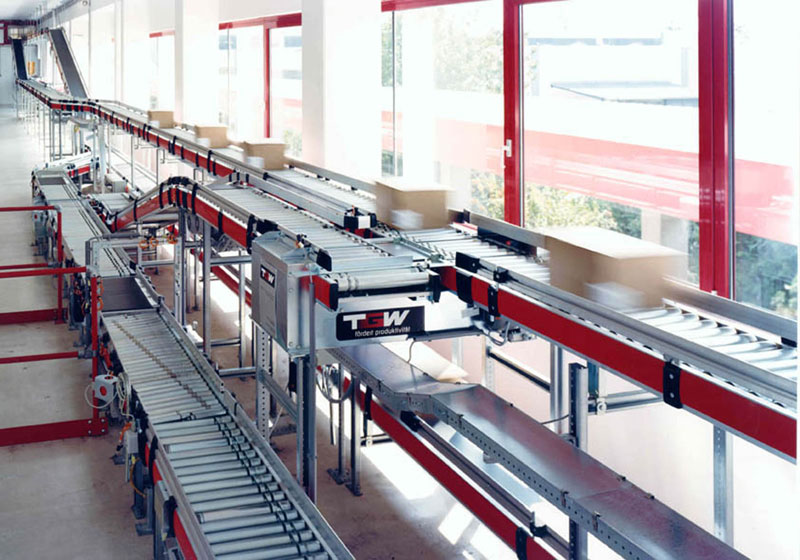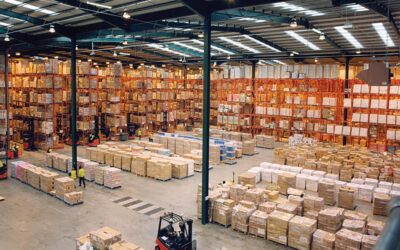The best way to understand engineered material flow is to consider the opposite. Randomly moving stuff, expedited! is one we encounter often.
What is engineered material flow?
A correctly designed material flow system is dynamic, interactive, and predictable. Dynamic because it can be adjusted and rebalanced to changing volume, product quantity, and product type. Interactive because it works with people and other processes to communicate what is happening. Predictable because it works as planned and identified issues can be resolved. Key differences to non-systems: 1. Nothing is random, 2. Signals are effectively communicated 3. Expediting happens through a process, not around a process.
This may sound exactly like your material flow today. It may sound like a space-age organizational practice. Whichever side you fall into, the key point is that creating flow is the key to reducing waste. More and better flow not only reduces waste, it creates opportunities to grow your capabilities.
The best flow systems use three fundamental principles that act in connected layers. All principles integrate and work together to create a functional system: planning, communication, and tools.
Planning: Why do you want a system and what do you want it to do?
Imagine a road that alternates between smooth concrete, rough asphalt, two track, and mud pits. An unplanned road makes for an uncomfortable drive.
Decide what you want, how it should work, and how it supports your business. Update at regular intervals to keep connection between the plan and the action. Planning supports all capabilities but mainly predictability.
Engineered material flow is an intentional plan of how materials will move through your facilities and processes. This means knowing, from the moment each component necessary for your product or service comes into your possession, how materials move through processes and where they go in your facility. Once you know this information, you can then lay out your processes and equipment to most efficiently and effectively flow materials through your processes.
Communication: How should the system interact and apply responsive signals?
Drivers on the road interact with a variety of signals. The signals – turn blinkers, stop lights, road signs, car horns – are all part of a common, standardized plan to create some level of predictability to traffic.
The signals built into the system govern how it operates and show when things are working or not working. Communication is the main interactive part of the system.
Just as in the traffic system, signals in a material flow system come in all forms. Painting and lines on the floor, lights on racks or overhead, different color boxes, kanban cards or signals, signs with numbers, barcode, and pictures, the list goes on.
Three things to keep in mind with the communication principle:
- Communication directs traffic in the system, not the traffic cop on every corner
- Signals should be complementary, not contradictory
- Signals should adapt in real time to changing conditions and illuminate abnormalities
Tools: What solutions aid in creating a powerful system?
You’ve got a beautiful road, signals everywhere to minimize accidents, now you need traffic – you need to get stuff on the road, in the system, and put it to work.
Tools are part of the initial plan and evolving improvements. The wrong tools won’t stop a well planned, communicative system from functioning, but they will make it less user-friendly. The best tools won’t turn a poorly planned, unconnected system into a Swiss watch. Putting the best tools into a great system will create a powerful engine.
The solutions you select will depend on your environment. A prior article on connected material flow systems provides some examples.
Carts instead of forklifts. Custom, right-sized packaging instead of bulk storage. Specific flow racks for part presentation instead of parts on tables. Workstations designed with flow in mind instead of independent work islands. All of these are solutions that will create a better system, and there are many more options available. The challenge is that because tools are the easy part, people start and end there instead of finishing there. Don’t fall into that trap. Plan a system using a robust process, understand how the communication and signals should work, test it, and then put equipment in place. Use the system and improve it again and again.
Simple? Yes. Easy? No. These principles are universal to many systems. The key here is to implement them together and apply maintenance to keep the system working.
To find out how we can help create engineered material flow in your operation, contact us to schedule an on-site visit.





